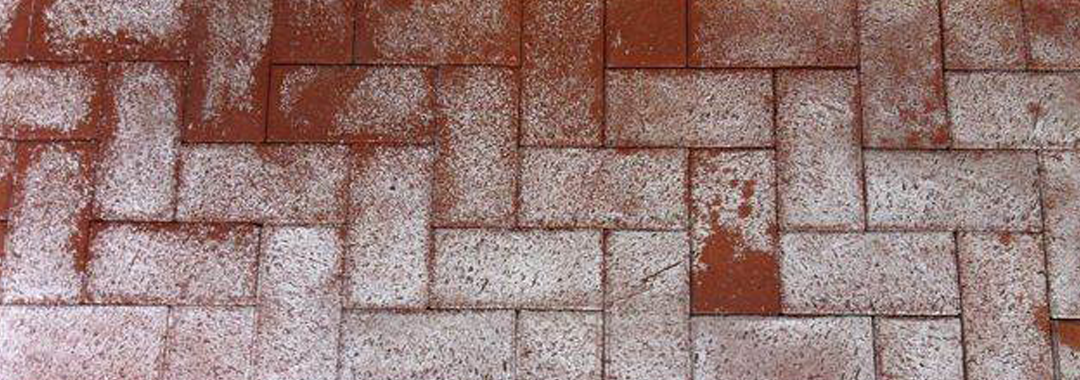Ever seen and wondered about the white spots appearing on your concrete pavers? It is called efflorescence. You probably dismayed over the prospect of having your visitors see them on your driveways, patios or walkways. Yes, it looks unpleasant but the good news is: its natural and can be removed!
How Efflorescence Forms
Soluble salts and other water dispersible materials cause efflorescence. It is when they come in contact with the surface of concrete and mortars. Low temperature, moist conditions, condensation, rain, dew and water added to the surface of fresh concrete to assist troweling are the usual culprits of this problem. It can occur shortly after exposure to moist or cool conditions.
The occurrence of efflorescence involves chemistry. Formed in the hydration reaction of concrete, calcium hydroxide or commonly known as lime is transported by water to the surface through the pores of the concrete. When it’s in the surface, it combines with carbon dioxide from the air to produce calcium carbonate (an insoluble material) and water. Hydroxides and sulfates of either sodium or potassium also cause efflorescence.
Efflorescence sometimes disappears over time: wear and foot traffic will eventually remove discoloration on walkways and patios, and sometimes, rain will wash it away. However, if you want immediate action, there are things you can do.
Follow these steps to remove efflorescence:
1. Simple washing: Scrub the surface with a stiff brush and mild detergent or water. Efflorescence is most soluble when it first appears, so it’s more effective to remove it sooner than later. Just make sure to rinse the surface thoroughly.
2. Pressure washing: This can be effective in removing surface deposits. Keep the pressure low when washing since too intense spray can open up pores in concrete and further encourage efflorescence.
3. Chemical cleaning: Before using chemicals on the concrete, always soak the surface with water to avoid the cleaner from penetrating into the stone and further opening up pores that will increase chances of more efflorescence forming. Use diluted muriatic acid, citric acid or vinegar. Always use gloves and goggles when handling the chemicals. After cleaning, use baking soda solution to neutralize the acid and finish by washing the surface with water.
Anyone who is fond of using concrete on their construction should know that efflorescence naturally occurs on all concrete. Even when it does, you should feel assured to know that it can be removed easily.


